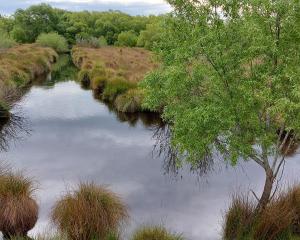The older among us well remember the names and exploits of Pat Reid, Airey Neave and numerous other Allied officers imprisoned during World War 2 in notorious Oflag 4C - Colditz Castle - the Germans' so-called "escape-proof" prisoner-of-war camp.
We've read the books (more than 70 at last count), seen the films and the BBC television series and marvelled at the heroism and determination of these young men to escape the grim, foreboding castle and somehow cross at least 600km of enemy territory to the nearest neutral country.
So, to visit Colditz in early spring this year was, at first, something of a let-down.
The castle wasn't as "grim and foreboding" as I'd imagined.
The rocky crag on which it stood wasn't as high, the sheer drops all around not quite so steep, and the heavy-timbered gateway nowhere near as menacing - or even guarded by German soldiers - as the memory of those tales had them.
Historical places first hand are sometimes like that; the mind can make veritable giants out of the merely larger-than-life, then reality intrudes.
Colditz Castle, still looming large above the little town of the same name, about 50km east of Leipzig in the far east of Germany, is now painted cream, not dirty brown; the River Mulde beneath burbles and gurgles between grassy, tree-lined banks; and the narrow cobbled roadway leading up and through the open gates seems more an invitation to explore a grand country home than a path to a prison.
Inside the gates, the two courtyards (the first used by the guards, the second by the prisoners) are compact, and quite sloping.
I had assumed they were large and flat, with barbed-wire fences.
"Appels", or roll calls, must have been cramped and awkward affairs, hemmed in by overpowering buildings, and there must have been a definite advantage for those playing down-slope in prisoners' games of "stoolball" [a team game somewhat like cricket and dating from at least as far back as medieval times].
The castle, owned now by the state of Saxony but generally empty, contains a small museum run by local residents.
Those rooms inside open to the public are small and relatively bare, although there are various displays and relics presented in what was the guardhouse (with its memorable stairway down which escapees dressed as German officers several times nervously descended) that make intriguing viewing.
Displays are in German and English, and there is an English-language tour on most days.
Rope ladders, fake uniforms, passes, train tickets, ration books, false buttons, a home-made wooden sewing machine and even a model of the famed glider that was built in the topmost roof cavity of the castle (and was almost ready for flight when the war ended) are among the items displayed.
So is a fully-equipped radio room built by prisoners in the eaves of the castle and not discovered, apparently, until 1993.
All fascinating stuff, as expected.
But it was when we stood in the little courtyard and looked up at the plastered walls, 5m thick in places, the still-barred windows and the steep pitch of the various roofs that we began to realise just how difficult were the chances of escape for those imprisoned British, French, Polish, Dutch and Belgian officers.
And when we went outside and looked up from the grounds far below the castle and saw the height of the sheer plaster and rock walls on three sides (the German garrison was on the fourth side) and thought of the number of guards (outnumbering prisoners), the continuous floodlighting and the hostility of the local residents, our long-held awe of the courage and persistence of those incarcerated here was reignited.
Records vary slightly but it seems there were 30 successful escapes from Colditz during the war - "home-runs" - and more than 150 unsuccessful attempts, many of which were "gone-aways" that failed.
There were more "home-runs" from Colditz than from any other prisoner of war camp in World War 2.
Early in the war, Adolf Hitler had personally approved the use of the 12th-century castle, or "schloss", as a special camp ("Sonderlager") for incorrigible Allied officers declared "enemies of the Reich" and for special prisoners such as relatives of Allied royalty or eminent leaders.
His nominated successor, Hermann Goering, had openly boasted it was "escape-proof".
Their later embarrassment, and that of the German military in general, led to officials of the German Democratic Republic suppressing Colditz escape stories after the war in what became East Germany.
Authorities also wanted to demolish the castle, seen as a symbol of a more decadent era but it survived, firstly as an orphanage for displaced children, then as a hospital.
Like many public buildings in East Germany, it fell into disrepair but in recent years renovation and restoration have begun.
Today, a youth hostel occupies part of the castle.
The museum staff at Colditz told us interest in the castle remains reasonably high, especially among English-speaking visitors.
A dozen other people came through the bitterly cold day we were there; just two days before, according to the visitors' book, an Australian couple had enjoyed "fulfilling the memories of our youth".
Ditto for two Kiwi baby-boomers.












